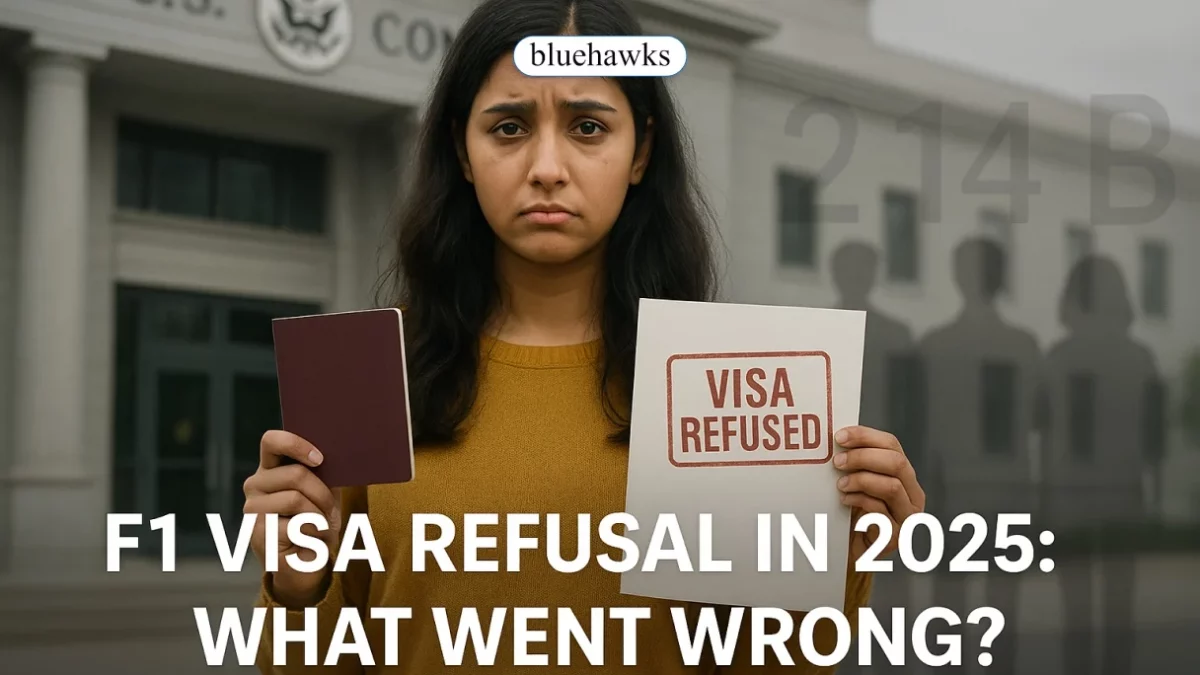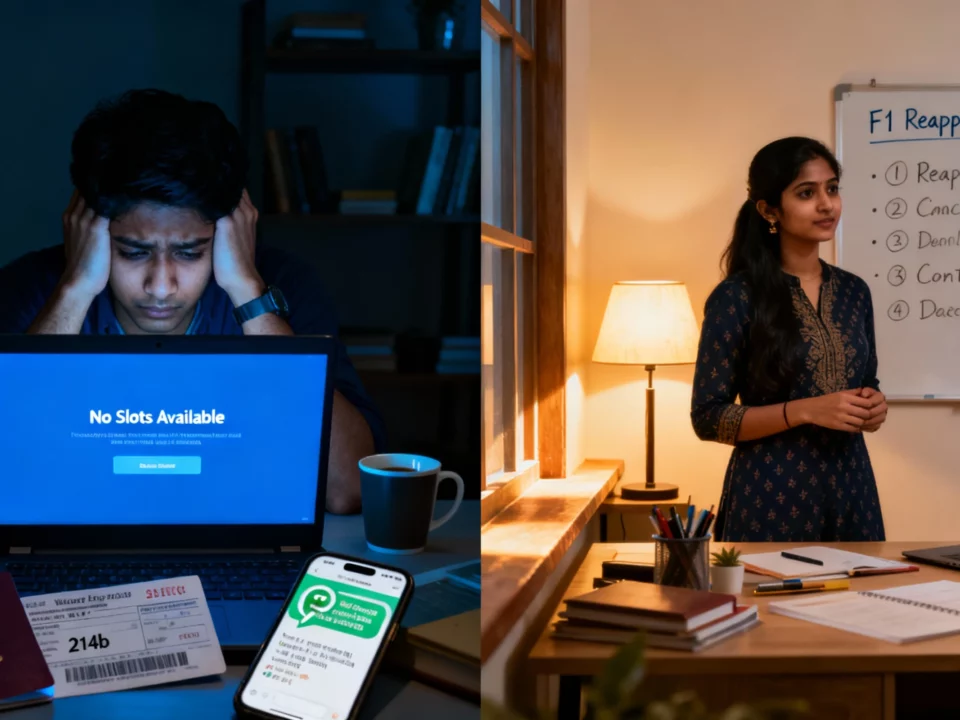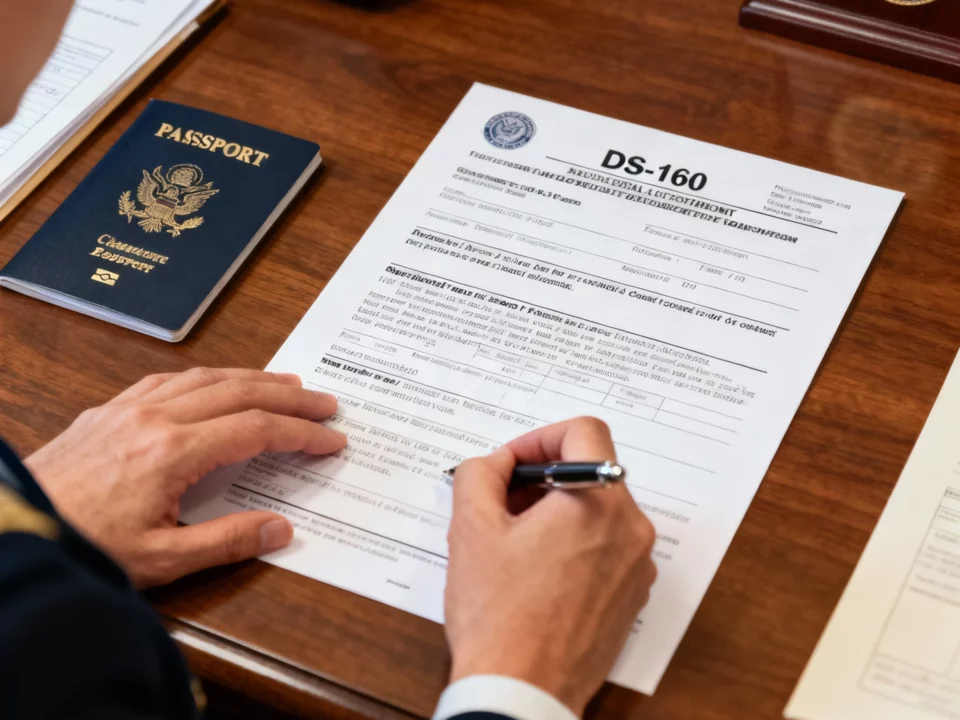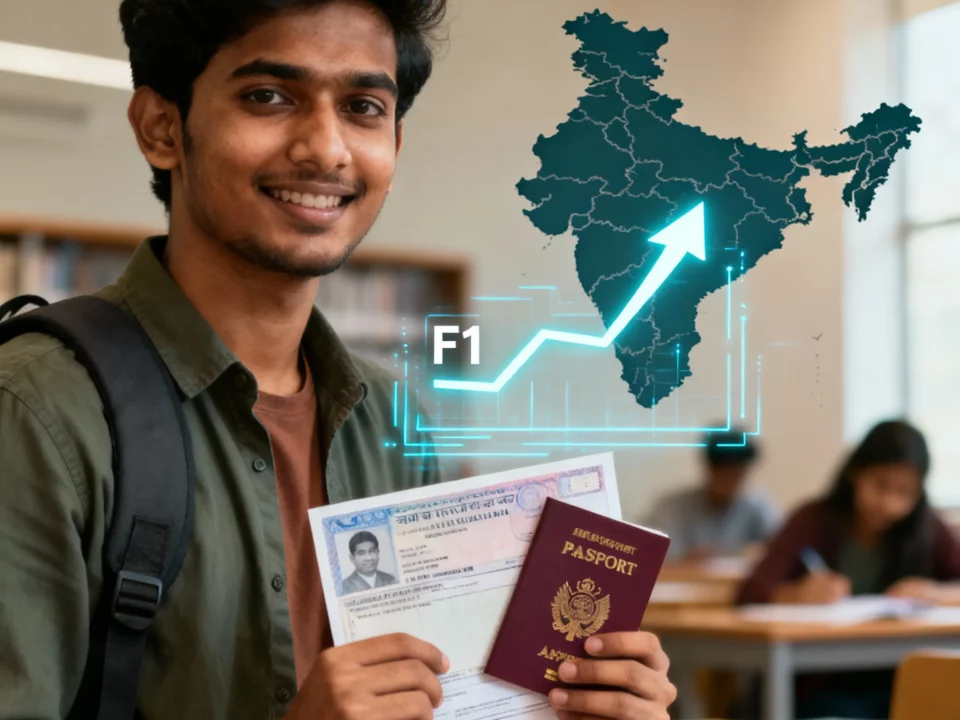F1 Visa Refusal: Why Students Being Rejected Under 214B

F1 Visa Refusal: Why Students Being Rejected Under 214B
Estimated reading time: 5 minutes
When a student receives a F1 visa refusal, it’s more than just a stamp of rejection—it’s the shattering of a dream. And in 2025, this heartbreak seems to be happening more often, even to deserving students with strong profiles.
Take Nishi from Rajkot, Gujarat, for example. She’s a brilliant student with no gap in education, solid financial backing, and an admit from a well-ranked U.S. university. Yet, she received a Refusal under 214 B. Surprised? So were we. Because, on paper, Nishi was the perfect candidate.
Table of contents
- F1 Visa Refusal: Why Students Being Rejected Under 214B
- Meet Nishi: A Story That Resonates with Thousands
- 214 B: The Black Box of Visa Refusals
- What Has Changed Since 2022?
- The Pattern That Cost Nishi Her Visa
- It’s Not Just the Profile—It’s the Presentation
- The Real Lesson for 2025 Applicants
- How We Helped Nishi Reset Her Game Plan
- Final Thoughts: A 214B Refusal Is a Wake-Up Call, Not a Wall
But here’s the thing-what used to work in 2022 is no longer working in 2025, especially in the study abroad space.
Meet Nishi: A Story That Resonates with Thousands
Nishi had it all sorted.
✅ She was yet to finish her Bachelor’s—no employment or career confusion.
✅ Her academics were strong.
✅ Her financial documentation was flawless.
✅ And her chosen university had a solid ranking and reputation.
Naturally, she assumed that her F1 visa approval was a formality. But that illusion broke quickly when she was handed a 214B refusal, without any detailed explanation.
You might be wondering the same thing we did: “Why was Nishi refused when there was no red flag in her profile?”
214 B: The Black Box of Visa Refusals
A Refusal under 214 B is one of the most frustrating outcomes for any F1 visa applicant. It simply means the consular officer wasn’t convinced you qualify for the non-immigrant visa category. That’s it. No breakdown. No checklist of what went wrong.
This blanket clause makes it even more important to carefully analyze what might have gone wrong during the interview—because the refusal isn’t about your profile alone. It’s also about how you presented it.
What Has Changed Since 2022?
Back in 2022, if you had decent academics, finances, and an admission letter—you were good to go.
But in 2025, the game has changed. The U.S. consulates have become much more selective and cautious. And here’s what we’re seeing on the ground:
- Overcrowded universities are under more scrutiny.
- Repetitive narratives during interviews raise red flags.
- Too many students from the same region applying to the same university can trigger patterns.
- Generic answers about future plans or “Why this university?” are a dealbreaker.
Visa officers are trained to detect patterns. If you’re the third student that day applying for the same university with similar responses, the bar for approval becomes much higher.
The Pattern That Cost Nishi Her Visa
During our detailed review of Nishi’s case, she shared something that clicked immediately:
“Four of us from my place got into this university and applied around the same time. Three were refused. Only one got approved.”
That was it.
This was a classic case of pattern-based rejection. Despite the university’s good ranking, too many applicants from the same geography targeting the same school often rings alarm bells for visa officers. It may indicate herd behavior, agency-driven applications, or lack of genuine academic alignment.
The irony? Nishi didn’t even know she was walking into a trap. Because no one told her.
It’s Not Just the Profile—It’s the Presentation
Today, your interview performance matters as much as your documents.
You could have Ivy League admission and full funding, but if your answers during the visa interview are vague or sound rehearsed, it can cost you your visa.
Things visa officers are increasingly watching out for:
- Lack of clarity in academic goals.
- Weak justification for university choice.
- No understanding of how the program connects to future career plans.
- Poor communication skills or over-reliance on memorized answers.
The Real Lesson for 2025 Applicants
Nishi’s story isn’t rare anymore. We’ve seen an increase in visa refusals under 214 B for students with great credentials. And it’s almost always because of one or more of the following:
- Applying to overcrowded or over-targeted universities.
- Generic answers in interviews.
- Poor articulation of future plans.
- Not standing out from other applicants.
This is the new reality.
But the good news? You can still win—if you play smart.
How We Helped Nishi Reset Her Game Plan
After the rejection, Nishi came to us feeling hopeless. But we knew it wasn’t the end of the road.
We:
- Audited her entire application and interview experience.
- Helped her identify a more strategic university list—less saturated and better aligned with her goals.
- Worked on her storytelling and interview prep—so her next attempt would feel authentic and confident, not memorized.
Now, she’s preparing for a stronger second attempt after her first F1 Visa Refusal-with a completely refreshed strategy and mindset and not just looking for a F1 Visa refusal slot
Final Thoughts: A 214B Refusal Is a Wake-Up Call, Not a Wall
If you’ve been rejected under 214 B, don’t take it personally. You’re not alone.
But don’t repeat the same approach either.
The F1 visa interview is no longer about just showing documents-it’s about showing depth, clarity, and individuality.
So if you’re stuck after a refusal, take a breath. Then take action.
Because the dream isn’t dead. It just needs a better plan.
💡 Need Help After a Visa Refusal?
At bluehawks, we specialize in helping students bounce back from F1 visa refusals with smart, profile-specific strategies and interview training.
👉 Book a free consultation today.
Let’s turn your refusal into a comeback story.



